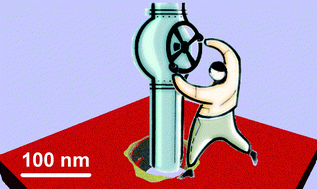Reversible nanovalves in inorganic materials
Abstract
This article describes recent developments in the design, fabrication and investigation of reversible nanovalves prepared in inorganic nanoporous materials such as glass,

* Corresponding authors
a
Department of Chemistry, University of Utah, Salt Lake City, UT, USA
E-mail:
i.zharov@utah.edu
Fax: +1 801 581 84333
Tel: +1 801 587 9335
This article describes recent developments in the design, fabrication and investigation of reversible nanovalves prepared in inorganic nanoporous materials such as glass,

 Please wait while we load your content...
Something went wrong. Try again?
Please wait while we load your content...
Something went wrong. Try again?
A. E. Abelow and I. Zharov, J. Mater. Chem., 2012, 22, 21810 DOI: 10.1039/C2JM33437B
To request permission to reproduce material from this article, please go to the Copyright Clearance Center request page.
If you are an author contributing to an RSC publication, you do not need to request permission provided correct acknowledgement is given.
If you are the author of this article, you do not need to request permission to reproduce figures and diagrams provided correct acknowledgement is given. If you want to reproduce the whole article in a third-party publication (excluding your thesis/dissertation for which permission is not required) please go to the Copyright Clearance Center request page.
Read more about how to correctly acknowledge RSC content.
 Fetching data from CrossRef.
Fetching data from CrossRef.
This may take some time to load.
Loading related content
